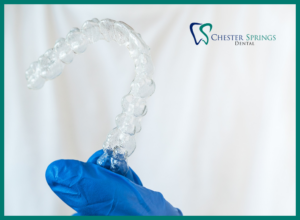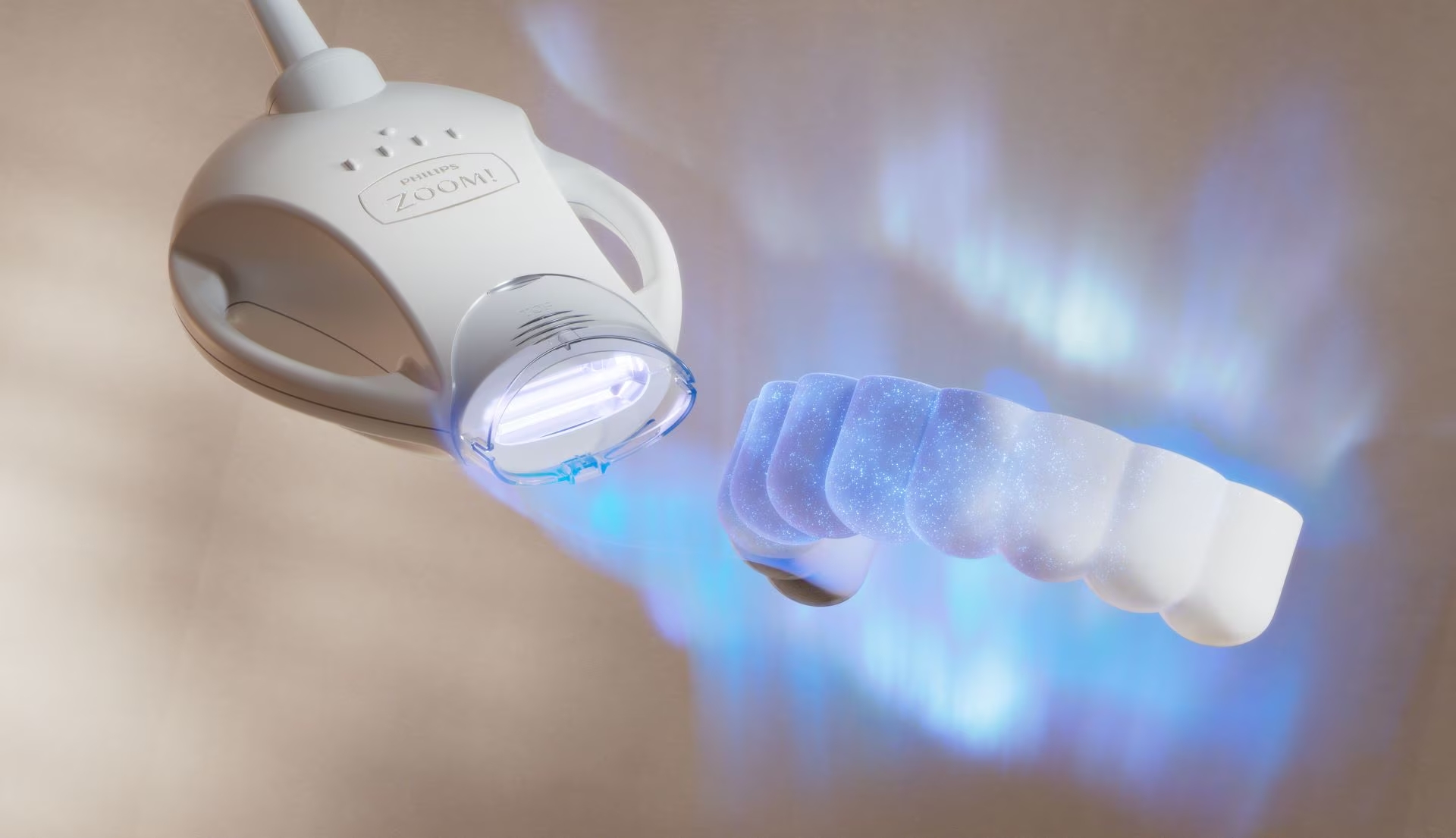There is never a convenient time to have a dental emergency! No one ever wants to deal with a dental emergency, and the medical professionals at Chester Springs Dental understand how much a dental emergency can ruin your day. Several situations and circumstances can require immediate care — and having the peace of mind that your dentist is available can make all the difference during such a stressful time! This overview of dental emergencies provides helpful information on the subject.
A dental emergency requires immediate attention in most instances. Certain injuries to your teeth or gums can become serious, leading to further damage. It’s important to contact your dentist immediately or go to the emergency room for treatment for a dental emergency.
What is a dental emergency?
A dental emergency is any dental problem that requires immediate attention. Not all dental problems are emergencies. But if you have bleeding that won’t stop, pain that doesn’t get better with medication or broken facial bones, you need dental emergency care.
What to do in a dental emergency
If you’re experiencing a dental emergency, the first thing you should do is call your dentist for further instruction. Many dentists have an emergency number you can call if it’s after regular business hours. If you don’t have a dentist, go to an urgent care center or your nearest emergency room.
Where to go for a dental emergency
For most dental emergencies, like a broken or knocked-out tooth, your dentist will treat you in their office. For more serious injuries, such as broken facial bones, you should go directly to the emergency room.
What is considered a dental emergency?
Examples of dental emergencies include:
- Severe toothache.
- Badly cracked tooth.
- Knocked-out tooth.
- Extruded (partially dislodged) tooth.
- Dental abscess (swelling of your face and jaw).
- Lost or broken dental restoration.
- Severe soft tissue injury (like a busted lip or deep cut).
Here’s how you can manage each of these dental emergencies until you see your dentist:

Severe toothache
First, thoroughly rinse your mouth with warm water. Use dental floss to remove any lodged food. If your mouth is swollen, apply a cold compress to the outside of your mouth or cheek. Take over-the-counter pain relievers, such as acetaminophen, naproxen or ibuprofen. (Never put aspirin or any other painkillers against your gums or tooth because it may burn your gum tissue.) See your dentist as soon as possible.
Badly cracked tooth
Save and rinse any broken pieces of your tooth. Rinse your mouth with warm water. If there’s bleeding, apply a piece of gauze to the area for about 10 minutes or until the bleeding stops. Apply a cold compress to the outside of your mouth, cheek or lip near your broken/chipped tooth to relieve pain and keep any swelling down. See your dentist as soon as possible.
Knocked-out tooth
Retrieve the tooth, hold it by the crown (the part that’s usually visible above your gums) and rinse off the tooth root with water. Don’t scrub it or remove any attached tissue fragments. If possible, try to put your tooth back in its socket. Make sure it’s facing the right way. Never force it into place. If it’s not possible to reinsert your tooth in its socket, put your tooth in a small container of milk (or a cup of water that contains a pinch of table salt, if milk isn’t available) or a product containing cell growth medium, such as Save-a-Tooth®. In all cases, see your dentist as quickly as possible. Your dentist has the best chance of saving a knocked-out tooth when it’s returned to its socket within one hour.
Extruded (partially dislodged) tooth
See your dentist right away. Until you reach your dentist’s office, to relieve pain, apply a cold compress to the outside of your mouth or cheek in the affected area. Take an over-the-counter pain reliever, such as acetaminophen, naproxen or ibuprofen if needed.
Dental abscess
Abscesses are swollen areas or pimple-like infections that occur around the root of a tooth or in the space between your teeth and gums. An abscess is a serious condition that can damage tissue and surrounding teeth. Left untreated, the infection could cause swelling of your face or jaw, or possibly spread to other parts of your body. If you have a dental abscess, you should see your dentist as soon as possible. In the meantime, to ease the pain and draw the pus toward the surface, try rinsing your mouth with a mild salt-water solution (1/2 teaspoon of table salt in 8 ounces of water) several times a day.
Lost or broken dental restoration
Sometimes, old dental restorations can fall out or become dislodged. If you have a broken or missing filling, stick a piece of sugarless gum into the cavity (sugar-filled gum will cause pain) or use an over-the-counter dental cement. See your dentist as soon as possible.
If you have a broken dental crown or bridge, make an appointment to see your dentist as soon as possible and bring the restoration with you. If possible, put your restoration back in place. Before doing so, coat the inner surface with an over-the-counter dental cement, toothpaste or denture adhesive to help hold the restoration in place. Don’t use a “super glue”!
Severe soft tissue injury
Injuries to the soft tissues, which include your tongue, cheeks, gums and lips, can result in bleeding. To control the bleeding, here’s what to do:
- Rinse your mouth with a mild salt-water solution.
- Use a moistened piece of gauze or caffeinated tea bag to apply pressure to the bleeding site. Hold in place for 15 to 20 minutes. (Tea contains tannic acid, which helps shrink blood vessels and slow bleeding.)
- To control bleeding and relieve pain, hold a cold compress to the outside of your mouth or cheek in the affected area for five to 10 minutes.
- If the bleeding doesn’t stop, see your dentist right away or go to a hospital emergency room. Continue to apply pressure on the bleeding site with the gauze until your dentist can see you.
I’m not sure if what I’m experiencing is a dental emergency. What should I do?
There are also situations that aren’t dental emergencies. In other words, you should still see your dentist as soon as possible, but it’s OK to wait for an appointment during regular business hours. Examples of issues that aren’t dental emergencies include:
- Dull or mild toothache.
- Small chip or crack in a tooth.
- Broken braces.
- Object stuck between your teeth.
- Minor soft tissue injury (like a small cut or sore).
Remember, though, if you have severe bleeding or pain, you should see a dental or healthcare provider right away.
How can I manage my symptoms until I see my dentist?
- Dull toothache: Rinse your mouth with warm water. Floss your teeth to see if there’s anything lodged between them. Take an over-the-counter pain reliever, such as acetaminophen, naproxen or ibuprofen. Never place aspirin directly on your gums. It will burn your tissue. Call your dentist to schedule an appointment.
- Small chip or crack in your tooth: If you have a chip or crack in your tooth that’s not causing any pain, it’s OK to wait until your dentist can see you. But if there are any sharp edges that irritate your tongue or cheeks, cover the area with orthodontic wax. (You can purchase orthodontic wax in the oral health aisle at most pharmacies.)
- Broken braces: Unless you have bleeding from your mouth, broken braces usually aren’t a dental emergency. If you have a broken wire that’s poking you in the cheek or tongue, gently bend the end of the wire using a pencil eraser or other blunt object. Then cover the wire with orthodontic wax until you can see your dentist or orthodontist.
- Object stuck between your teeth: If you have something lodged between your teeth, try to gently remove it using dental floss or an interproximal brush. Never try to remove an object with sharp instruments.
- Minor soft tissue injury: Thoroughly rinse your mouth with a saltwater solution or antibacterial mouthwash. Apply pressure to the affected area using a piece of clean cotton gauze. The bleeding should stop within 15 to 20 minutes. If you still have severe bleeding after that, you should seek immediate care.
When should I go to the ER for tooth pain?
If your dentist’s office isn’t open when tooth pain develops, you should go to your nearest emergency room. The ER staff can help ease your symptoms until you can see your dentist.
What can an emergency room do for a toothache?
Emergency room providers can give you medications, such as antibiotics or pain relievers, to alleviate pain and swelling. But they don’t perform restorative treatments, such as fillings or crowns. Once you receive dental emergency care at the ER, you’ll still need to see your dentist as soon as they’re back in their office.
A note from Cleveland Clinic
A dental emergency is any injury to your mouth that causes uncontrolled bleeding, severe pain or broken facial bones. Left untreated, a dental emergency can lead to even further issues, including the spread of infection, tooth mobility and even tooth loss. Prompt, timely treatment is key. If you’re experiencing a dental emergency, the first thing you should do is call your dentist. Then, follow the instructions outlined here until you can make it to their office.
Dr. Richard Gross, Dr. Graeme Hudson, and the rest of our caring team at Chester Springs Dental put the patient first with everything we do, including allocating time for emergencies to help us see you immediately! We know how stressful an unexpected dental mishap can be, and our clinic keeps time free to address emergencies. Your teeth and oral health are in good hands with Chester Springs Dental. Call today for a consultation at 610-524-9530 or join our Facebook Community here!
Reference: [ https://my.clevelandclinic.org/health/articles/11368–dental-emergencies-what-to-do ]









 There are two main types of teeth whitening procedures. Vital whitening is performed on teeth that have live nerves. Non-vital whitening is done on a tooth that has had root-canal treatment and no longer has a live nerve.
There are two main types of teeth whitening procedures. Vital whitening is performed on teeth that have live nerves. Non-vital whitening is done on a tooth that has had root-canal treatment and no longer has a live nerve. If you find that your gums are white or sore, follow up with your dentist.
If you find that your gums are white or sore, follow up with your dentist.









